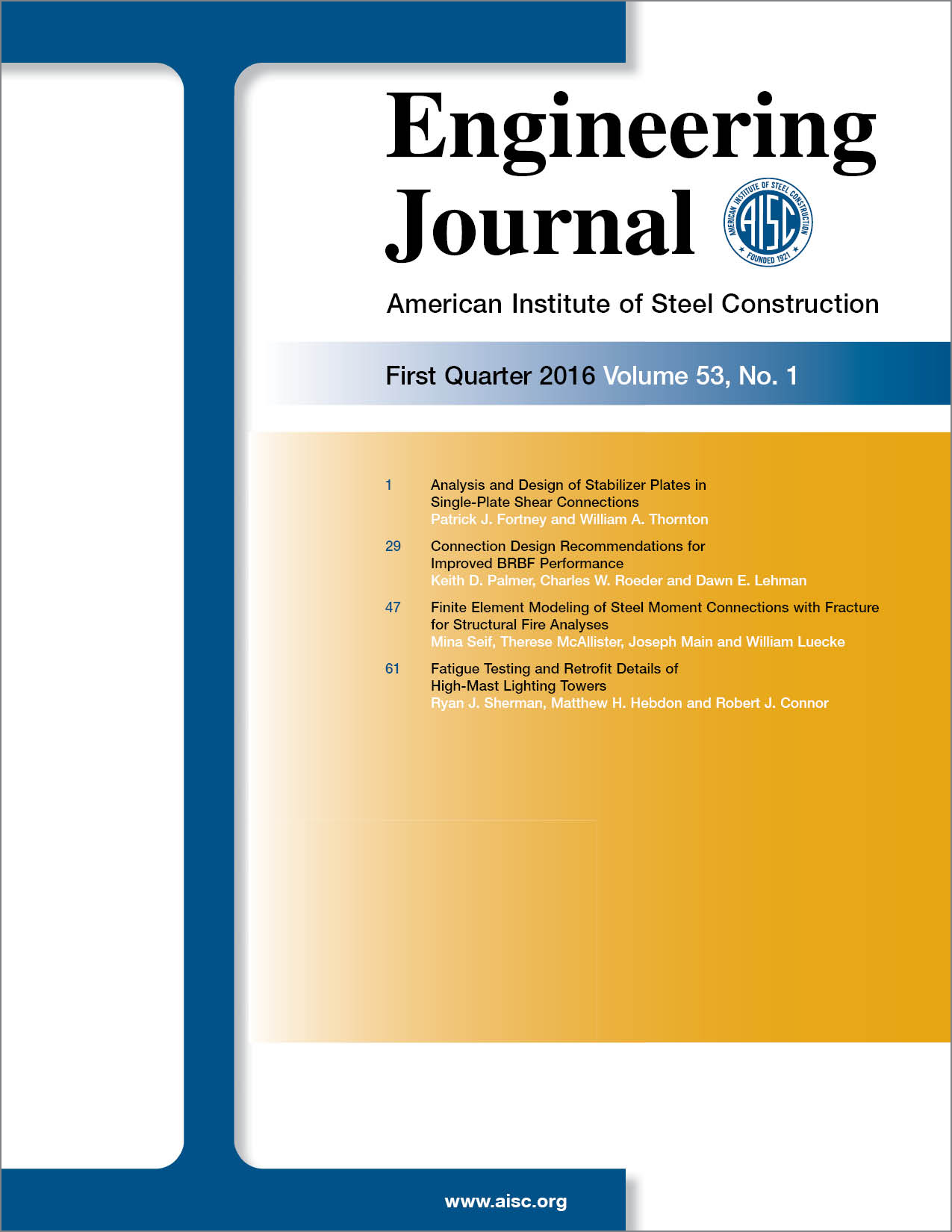Finite Element Modeling of Steel Moment Connections with Fracture for Structural Fire Analyses
DOI:
https://doi.org/10.62913/engj.v53i1.1093Keywords:
plastic strain, fracture, erosion strain, finite element analysis, material modeling, structural fire effectsAbstract
Performance-based methodologies to evaluate the fire performance of structures are needed to move beyond the prescriptive procedures currently in use, which cannot be used to determine actual structural performance in fire. Analytical methods are needed for simulating the performance of structural systems, including connections, subject to realistic fire effects. Framing connections may be subject to large, unanticipated deformations and loads during fire events, and connection failure may lead to other failures or local collapse. This paper presents the development of detailed finite element models of typical moment connections for steel-framed structures. These detailed models incorporate temperature-dependent material models that have been calibrated against available test data from tensile coupons, including the modeling of necking behavior and fracture. Connection performance at ambient and elevated temperatures is evaluated, and dominant failure modes are identified.

